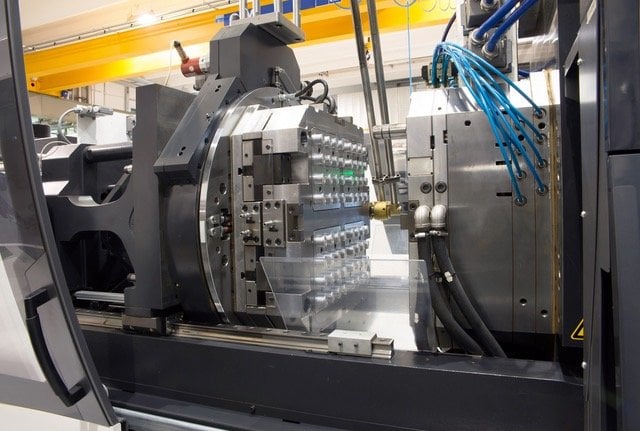www.industryemea.com
29
'21
Written on Modified on
Choosing the optimal thermal fluid for plastics moulding
Plastic can be used to manufacture products for almost any industry, from packaging to aerospace. Manufacturers may use different methods to create and mould these products but there will always be one constant — heat.

If the heating solution isn’t efficient, productivity and quality will suffer. Here Clive Jones, managing director of thermal fluid specialist Global Heat Transfer, explains the benefits of using heat transfer fluids in plastic moulding applications and explores the factors to consider when selecting a thermal fluid.
Electric heaters are commonly used in a variety of plastics manufacturing applications, such as injection moulding, extrusion moulding or rotational moulding. These tubular heaters provide rapid and accurate heating to increase efficiency when melting materials.
While electric heaters are a popular method of heating plastics, it does not always provide the user with enough precision to guarantee product quality. Alternatively, thermal fluids offer advantages over this heating technique because they offer even more precision to guarantee product quality. Engineers can use thermal fluids to heat a range of equipment in moulding processes, such as reservoirs, moulding machines and extruders, to exact temperatures by circulating heat transfer fluids at a controlled rate.
Choosing a fluid
Matching the thermal fluid to the system and operating temperature of the application can help to preserve fluid life. Moulding processes, for example, require heat transfer oil with a broad temperature range to ensure effective heat transfer and maximum efficiency across production.
The chemical composition of the fluid will also impact its suitability for the application. Globaltherm® Syntec, for example, is a superior synthetic heat transfer fluid designed for liquid phase heat transfer. It has low vapour pressure, high conductivity and oxidation stability to better resist thermal degradation at higher temperatures. Alternatively, Globaltherm® HF is an energy efficient oil designed for single fluid heating and cooling processes. It contains a resilient blend of additives to ensure trouble free service when managed correctly and has one of the highest flash points in the industry — 276˚C — for efficient heat transfer at very high temperatures.
Extending fluid life
Selecting a heat transfer fluid with a broad operating temperature so that it can be used for multiple processes may reduce operating costs, but only if the fluid is properly maintained. If thermal fluid is left unattended for long periods of time, degradation may go unnoticed until it impacts production. The degradation process can lead to the formation of carbon, a natural insulator that builds up in the system. This can lead to a lack of flow or the creation of hotspots, which can prevent the system from reaching and maintaining the temperatures needed — leading to quality problems with plastic products. At this point, manufacturers must draw a live, hot circulating sample and analyse the condition of the fluid while it’s in operation. Fluid analysis may show a need to stop production to drain, flush and refill the system, incurring costly downtime.
Regular thermal fluid analysis can slow the degradation process and reduce the risk of unexplained drops in productivity. Taking quarterly samples of the fluid while the heat transfer system is hot and circulating gives manufacturers an accurate representation of fluid condition. Tracking the analysis of each sample to look for trends enables manufacturers to understand what is happening in the system and allows them to intervene before degradation impacts production.
According to the World Economic Forum, the global plastics industry produced 311 million tonnes of plastic in 2014, and this figure is expected to have doubled by 2034. This expansive industry relies on heat to melt, mould and prep plastics effectively, so taking the time to choose the optimum heat transfer fluid for the required operating temperatures and taking steps to extend fluid life can help manufacturers effectively use this resource.
www.globalhtf.com

